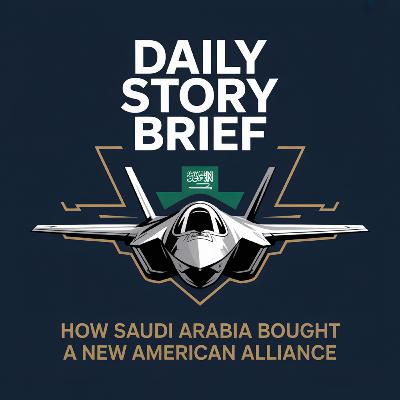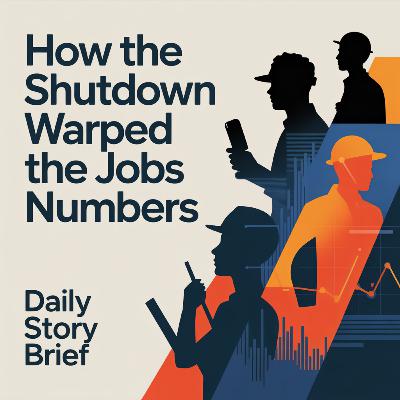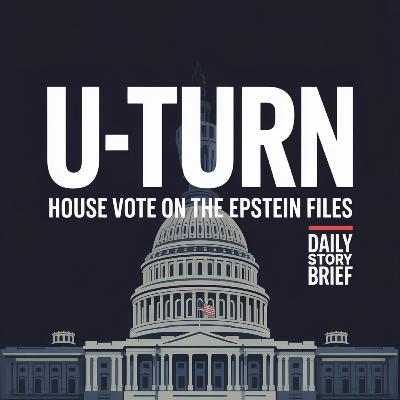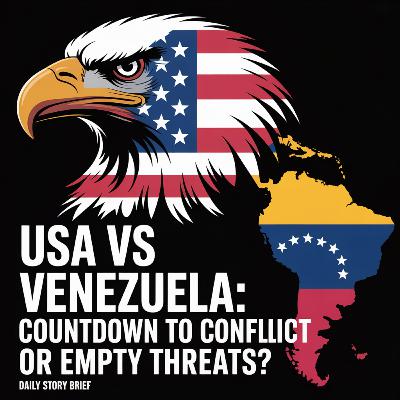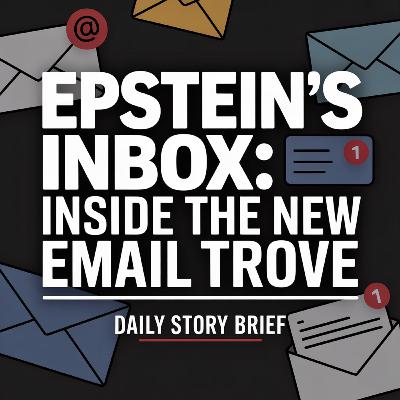How Saudi Arabia Bought a New American Alliance
Description
It looked like a state dinner ripped straight from a movie: fighter jets roaring overhead, a horse-drawn procession on the South Lawn, billionaires and celebrities in black tie on the White House grounds. But behind the spectacle of Saudi Crown Prince Mohammed bin Salman’s first visit to Washington in seven years was something far more consequential—a sweeping renegotiation of power, money, technology and morality between the United States and Saudi Arabia.
In this episode of Daily Story Brief, we break down how one carefully choreographed visit turned into a wholesale reset of the U.S.–Saudi relationship. The hosts start with the symbolism of the reception itself: the flyovers, the guest list stacked with tech titans like Elon Musk and Tim Cook, global icons like Cristiano Ronaldo, and the unmistakable signal that Washington now sees MBS as the kingdom’s real decision-maker, head of state or not.
From there, the episode dives into the heart of the new defense architecture. You’ll hear how the surprise designation of Saudi Arabia as a major non-NATO ally (MNNA) vaults Riyadh into an elite club alongside countries like Israel, Japan and Australia—without creating a NATO-style legal obligation for the U.S. to defend the kingdom. The hosts explain what this status actually unlocks: access to joint Pentagon research and development, faster procurement of sensitive weapons systems, priority access to surplus U.S. hardware, and even the ability for Saudi defense firms to bid on U.S. military maintenance contracts abroad.
Then the focus shifts to the most controversial hardware on the table: the F-35. The episode unpacks why selling the U.S.’s most advanced stealth fighter to Saudi Arabia reshapes the regional balance of power and collides head-on with America’s legal obligation to preserve Israel’s qualitative military edge. You’ll learn how Washington tries to square that circle with “capability differentials,” custom upgrades for Israel, and even the ultimate failsafe—a software-based “kill switch” that could theoretically shut the jets down if they were ever turned against U.S. interests.
But this visit wasn’t just about weapons. It was powered by an almost unimaginable number: a pledge to boost Saudi investment in the United States to nearly one trillion dollars. The hosts walk through how MBS is using that money as strategic leverage, tying his country’s Vision 2030 transformation to U.S. technology in artificial intelligence, semiconductors and data centers. They explain why Saudi Arabia’s cheap energy gives it a unique advantage in the AI race, how massive purchases of NVIDIA’s most advanced chips fit into that plan, and why U.S. officials are nervous about the risk of those technologies bleeding to China.
The episode also explores the emerging civilian nuclear partnership between Washington and Riyadh: the promise of U.S.-built reactors, the clash over Saudi demands to enrich uranium on its own soil, and the talk of a potential U.S. nuclear umbrella as the only thing that might convince the kingdom to back down. That debate feeds directly into the larger strategic picture—deterring Iran, avoiding a devastating Gulf war, and perhaps even reviving some form of nuclear diplomacy.
At the same time, the hosts dissect the diplomatic brick wall around the Abraham Accords. Despite securing almost his entire strategic wish list, MBS refused to give up his public demand for a guaranteed path to an independent Palestinian state as the price of normalizing ties with Israel. The episode lays out why that condition is politically impossible for Israel’s current government, why the post-Gaza climate makes normalization even more toxic in the Arab world, and what that stalemate reveals about the limits of even trillion-dollar leverage.

